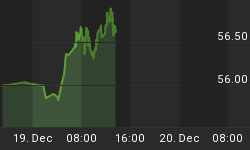Some indicators are hard to decipher, others are accurate some times, and some times not.
For instance, take the New York Stock Exchanges daily New Highs ... symbol: YHIN (on some data feeds).
Since the middle of 2009, the NYSE's New Daily Highs has had a good correlation with the stock market. For instance, take today's two and a half year chart that we posted below.
First note that we have two horizontal lines in red. One is at a value of 100, and the other is at a value of 50. When you see the daily number of New Highs close below 100, start to pay attention. When it drops below 50, the market corrects ... see the two areas with the red circle. And then ... back above 100 is typically associated with market rallies again.
Now, take a look at something else that is going on in this chart ...
Take a quick look at labels 1, 2, and 3. What do you notice when you compare the level of New Highs with the levels of the S&P 500?
What is obvious, is that the New Highs are attaining lower peaks as the S&P is reaching higher peaks. From this chart, one cannot say when label 3 will finally hit its peak, but one can say that it is a lower peak so far and that its daily closes have been holding above that important 100 level.
What does this say?
That as time goes on, fewer and fewer stocks are bargains? Or, that investors are having trouble finding stocks that have a high probability of having a great run up? Actually, both are correct. As the peaks become lower and lower over time, there will obviously be a point where there are just not enough good potential stocks to buy that could power up a sustainable rally. And then ... the odds are that we shift back to a Bear Market.
Is there a time when the NYSE's New Highs is not a good indicator?
One of the times that it does not work well, is just before the market is transitions from a Bear to a Bull market. During such times, stocks can't make New Highs yet because sellers still have stocks in a bottoming process. However, it is at such times that the Institutions typically come in, see the bargains, and move to Accumulation on select stocks ahead of the crowd. FYI ... they only move to Accumulation after they see a high odds probability of an economic pick up in the near future.
















